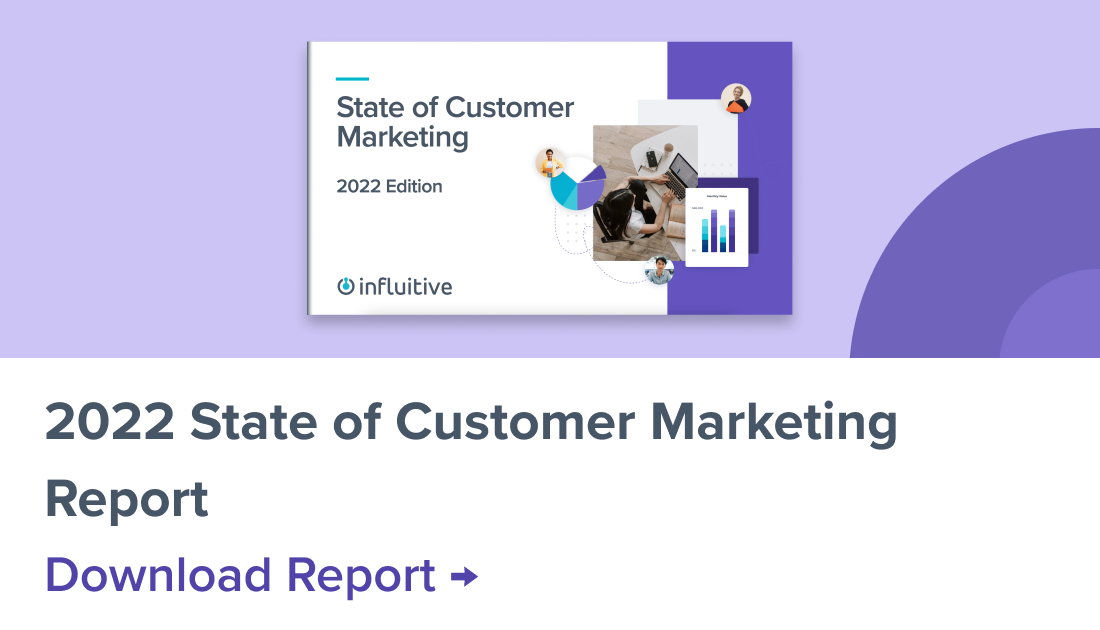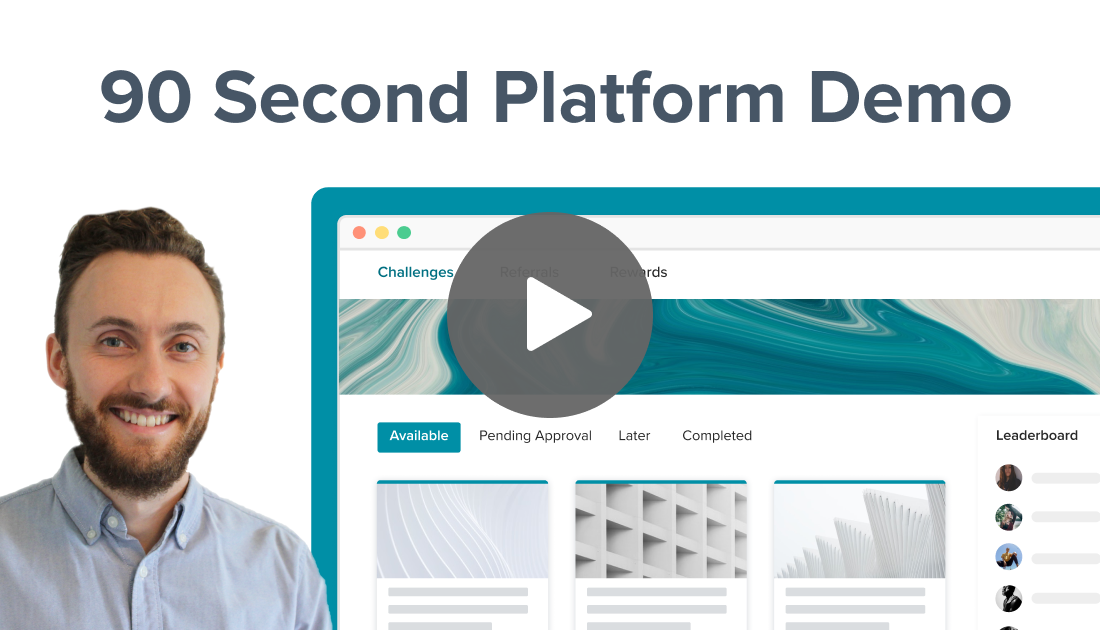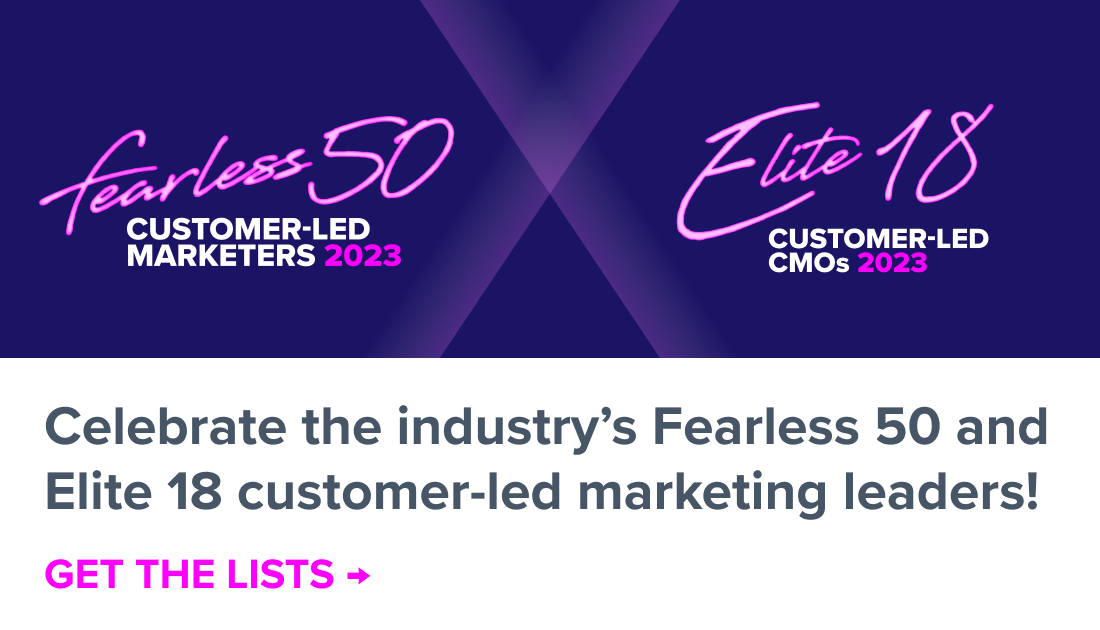As more organizations realize the value of being a customer-centric organization, they’re beginning to formalize their customer marketing programs. The 2017 State of Customer Marketing report found that 93% of organizations expect their customer marketing efforts to take on greater importance over the next year, and 62% will increase their customer marketing staff and/or budget.
Iron Mountain—the industry leader in storage and information management services—is leading the way when it comes to engaging customers. Since 2013, they have run a customer marketing program aimed at better understanding customers to improve their experience–and driven six-figure value for the business as a result.
Read on to dive into their strategy and program details.
A customer marketing strategy that delivers
 Director of Customer Marketing David Coates leads the customer marketing strategy at Iron Mountain, leveraging customer insights to build programs that boost engagement, advocacy and ultimately retention and loyalty.
Director of Customer Marketing David Coates leads the customer marketing strategy at Iron Mountain, leveraging customer insights to build programs that boost engagement, advocacy and ultimately retention and loyalty.
“Given the maturity of Iron Mountain’s business and extensive Fortune 500 relationships, my team and I focus on identifying new ways to build or extend customer relationships and reinforce Iron Mountain’s position as a strategic business partner and industry leader,” he says.
Based on input from SiriusDecisions, David pulled together a centralized team responsible for customer-related activities and defined the team’s mission and objectives: create programs to build greater intimacy with customers and ultimately drive more business.
For budget and resource reasons, the team first focused on building engagement points—like industry events and roundtables—with Iron Mountain’s largest accounts. (Learn which strategies are proven to drive the highest ROI in this report.)
“Our team’s targeted customer panels and roundtables are a win-win. While these outlets allow customers to share experiences and benchmark themselves against their peers, they provide us with invaluable insight into customers’ pressing concerns,” explains David.
Measuring customer marketing success
To prove the value of his customer marketing program, David has documented benchmarks that matter to Iron Mountain’s executives.
He and his team demonstrate their impact by tracking and measuring results within Eloqua and Salesforce.com. Each customer marketing program is assigned a campaign ID in Eloqua. Through Salesforce, the team can tie engagement through their initiatives to revenue, including cross-sell and upsell opportunities.
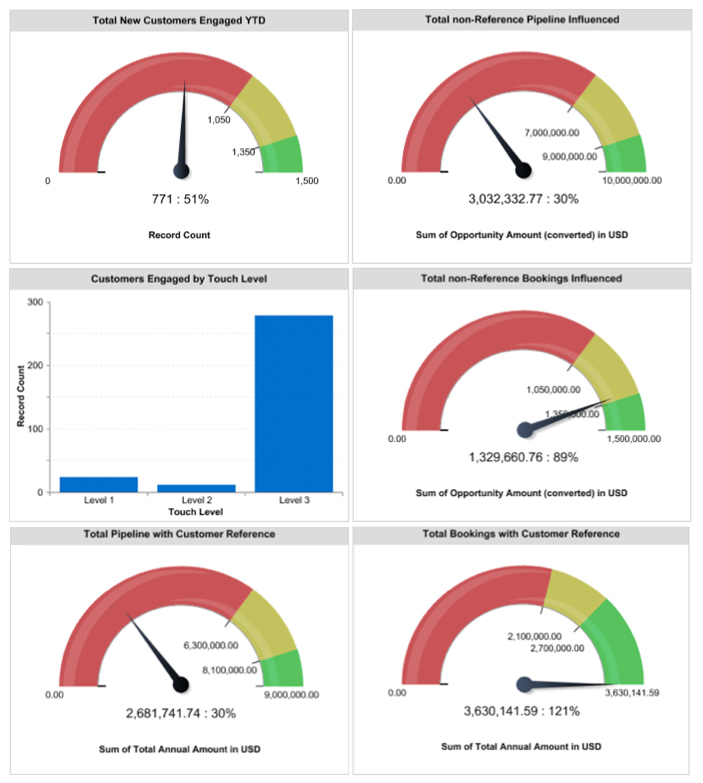
David consults his personal customer marketing dashboard to track the impact of his team’s efforts. “Because of this, we can demonstrate a clear link between tactics and long-term impact on the business, a must for any customer marketing program,” he says.
One size does not fit all
Adopting a portfolio approach, the team has identified multiple ways to identify and engage customers from high-touch, more intimate to larger scale, higher volume programs.
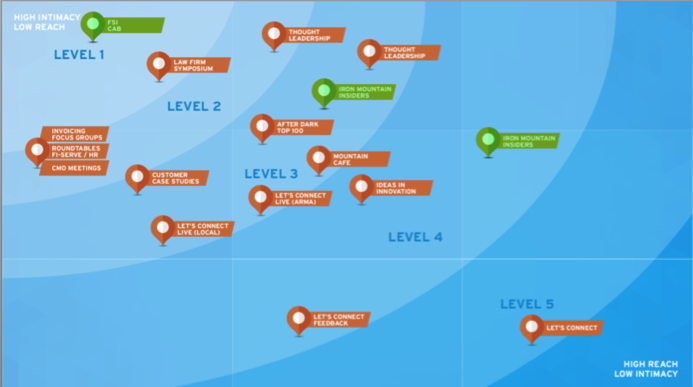
An example of a high-touch program was the launch of Iron Mountain’s first Customer Advisory Board. Focused on Fortune 500 customers in the financial services sector, the Advisory Board brings together a small number of strategic customers with Iron Mountain’s executives to identify and address some of the key business trends impacting the practice of information management.
Over the last three years, the Advisory Board has been instrumental in influencing Iron Mountain’s product strategy and co-creating practical guides to address key industry challenges. Iron Mountain has also partnered with a number of these customers to participate in industry events and roundtables as well as identify organic opportunities for cross-sell and upsell.
On the other end of the spectrum, the team introduced Iron Mountain Insiders, an online advocate marketing program and community designed to engage, recognize and reward customers. When Iron Mountain received feedback that customers wanted the company to share more thought leadership and help them connect with their peers and other industry experts, they created Insiders to give customers the opportunity to network, learn and share.
It’s also a venue for the team to identify customers who can act as potential influencers and advocates for Iron Mountain. In the first year of their program, Iron Mountain engaged with more than 400 new advocates who influenced $335,000 in pipeline and $108,000 in bookings.
Creating a forum for thought leadership
As part of the program, David’s team sought to connect customers seeking to build thought leadership, and give them a space to showcase their initiatives, while leveraging these customers as advocates.
As David explains, one cornerstone of effective customer marketing is providing customers with the tools to be internal subject matter experts by staying ahead of industry trends and challenges. “We help our customers demonstrate the value they bring to their organizations and their expertise within their domains.”
P.S. If you want to learn how to track the ROI of your customer marketing, download our comprehensive guide here.
This also enables customers to identify and address potential gaps. For example, during smaller events like industry round tables, some customers realize they are behind their peers when it comes to information management. By getting a seat at the table where these discussions take place, Iron Mountain can equip their sales reps to follow up with relevant conversations and suggestions for how less mature customers can improve.
This makes the sales process much smoother, since the discussions and recommendations originate with customers—not sales reps. “This has allowed our team to successfully help convert referrals into qualified leads and accelerate the flow of hot leads into the funnel,” says David.
In the next post in this series, David outlines the organizational framework needed for an effective customer marketing strategy. In his final post, he describes the people and skills needed to succeed in customer marketing.
This post was originally published on July 7th, 2015, and updated on February 6th, 2017.








